Nowadays, it seems every manufacturer has a gravel bike on the market, or at least in the works and on the drawing board. Cyclocross bikes have served well for long excursions onto one’s favorite gravel roads, but manufacturers have taken those designs further with bikes tweaked for gravel cycling; changes to geometry, clearance for bigger tyres and the ability to be ridden virtually anywhere. The slacker angles associated with many of these frames provides a measure of stability which instills confidence in the rider, and wider tyres with lower air pressure ensure comfort and plenty of grip on loose gravel road surfaces.
Even with all of these design factors taken into account, bumps, potholes, stretches of washboarded roads and rough surfaces eventually fatigue a rider. A relaxed riding style that allows the bike to float over the worst of it certainly helps, but for prolonged time in the saddle, there is no way around the fatigue or discomfort factor. The Lauf Grit promises to take some sting out of the front end of a gravel bike, with it’s unique fork design that offers 30mm of travel and no moving parts.
How does that work?
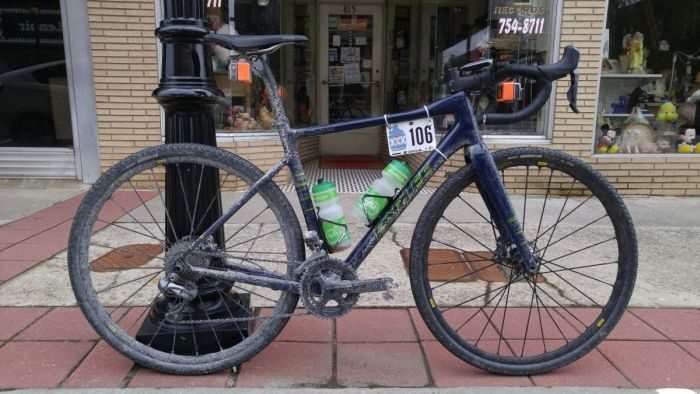
Tyler Benedict of Bikerumor.com gave his first ride impressions on a preproduction version of the Grit fork early in 2016, whereas this review covers the production version. The Lauf Grit fork features all carbon construction, including the two lower segments, which are attached to the main body of the fork by Lauf’s S2 springs. These springs are made from military grade S2 glass fiber that Lauf claim is resilient and flexible in the direction of travel. Lauf have confidence in their product; they have stress tested the Grit for over 1,000,000 test cycles with at least 20mm of movement during each cycle. They back the fork with a five year warranty to the original owner, and offer a discounted crash replacement policy should the fork be damaged.
Installation of the fork is a relatively easy affair, provided you have the appropriate crown race. The Grit’s 300mm uncut carbon steerer tube tapers from 1 1/8″ to 1 1/4″ and is delivered with a 1 1/2″ crown race. However, my Parlee Chebacco test bike required a 1 1/4″ crown race – once that was sourced, installation could continue.
In the case of the Chebacco, the front hydraulic brake housing was routed internally through the stock fork, but Shimano’s handy hydraulic brake housings and connectors allowed the cable to be split and removed from the fork, saving time unwrapping and wrapping handlebar tape, etc.
The Grit’s steerer was cut to a suitable length and installed, brake housing routed and held in place with zip ties, re-connected and bled. Massive thank you to Martin of Super Cool Bike Shop for assisting with the installation. The Grit weighed 924 grams sans thru-axle before the steerer tube was cut. Compared to the Parlee’s stock fork at 426 grams cut, even with a small reduction in weight due to the reduced steerer length but nullified by the addition of the crown race, an additional 498 grams of weight was added to the bike. Holding the Parlee aloft, it felt noticeably heavier at the front end.
The Grit’s 30mm of travel features a progressive spring rate. In a nutshell, as the fork compresses further, the springs become stiffer. This is intended to prevent the fork from bottoming out while remaining sensitive to small bumps. I had concerns about the fork acting like a pogo stick, bobbing up and down during out of the saddle climbing or hard efforts. There is definitely a small amount of bob going on, but it is negligible and less than a well-behaved regular suspension fork with its lockout activated. Heavier riders may get the fork to bob more than I could – worth mentioning, I weigh between 154 – 158lbs. Rider weight limit is 242lbs / 110kgs.
Above, the thru-bolt axle (15mm in my case) resides between the lowers and moves relative to the upper which provides the suspension effect. On smooth gravel roads, the fork has a relatively neutral feel to it. With an axle to crown measurement of 409mm and 6mm of sag accounted for, the feel of your bike shouldn’t be affected too much. Fork rake is 47mm.
However, aesthetics are affected, and some riders will be unable to get past the unorthodox look of the fork – for some, it doesn’t win any style points, a fact I was constantly reminded of anytime I rode the Parlee / Grit fork in the company of others.
The Grit accepts a 160mm brake rotor at minimum, with options for a 12mm or 15mm thru-axle. Because I had a post-mount Shimano hydraulic brake on the Parlee, I had to install Shimano’s post mount to flat mount adapter in the 140mm size – this sounds incorrect, but that positions the caliper into the right position on the Lauf Grit. See Lauf’s website for installation tips.
With Maxxis Rambler 700c x 40mm tyres mounted on an American Classic Argent disc brake wheelset, there is a stack of tyre clearance beneath the fork. Lauf recommend a 700c x 42mm tyre at max, but a 45mm tyre will fit without any trouble. For 650B / 27.5″ wheels, the fork will accommodate a 2.1″ wide tyre.
Regardless of looks, the Grit works. Riding over a consistent smattering of surface gravel, the fork is kept busy, nullifying fine bumps and taking the edge off. For bigger impacts such as potholes, the Grit doesn’t completely soak up the entire hit, but enough that the impact is reduced, helping the rider maintain control of the bike. This feature definitely helps for rough and tricky descents – you may notice the added weight of the fork on a long climb, but most riders will forget about that and appreciate the extra comfort and control on the descent. I could envisage this fork being very useful on courses like the original Iron Cross through the Michaux State Forest of Pennsylvania – where there are plenty of rocky descents!
Lateral stiffness – this has been a question for many riders considering these forks. I haven’t ridden the MTB versions, this is a task better suited for Bikerumor.com editors such as Zach. However, with just 30mm of travel, I didn’t notice any shift or sway in the wheel side to side. To further explore this potential issue, I took the Lauf and Parlee down some reasonably CX-bike friendly MTB trails; the Lauf Grit fork never skipped a beat, and continued taking edge off the bumpy stuff.
In my video above, the fork’s main shortcoming is highlighted – the inability to deal with heavily washboarded roads. However, this issue also affects mountain bike suspension, hardtail or full. Suspension of any kind simply cannot rebound fast enough to offer any relief from the uncomfortable pounding of washboarded roads. In my experience, riding bigger, 2″ wide tyres with low pressure at speed on a rigid gravel bike with big tyre clearance, is the only way to feel any sort of relief from these road conditions. Washboard just isn’t any fun.
Update, May 2, 2017
Above, the Lauf engineers rode the Lauf Grit fork across a milder set of washboard road. It definitely performed better in this scenario.
The Grit fork isn’t for everyone, but it will appeal to riders looking to calm some of the harsher gravel roads out there, or those who desire a measure of comfort as they rack up the big gravel miles, training or racing. The zero maintenance aspect of the fork is another bonus – no seals or fluid to worry about, and no friction between moving parts either.
However, I’ll be switching the Parlee Chebacco back to its original, rigid carbon fork. I prefer the free suspension option of lower tyre pressure and lower weight of the Chebacco’s stock fork – and I really need to return the Chebacco to Parlee soon – in stock form! If I had the physical storage space available, I would consider adding at least one Lauf-equipped gravel bike to my collection – cue the N+1 rule!
The Lauf Grit fork is priced at $US 790.00.
| Lauf Grit Fork |
| Click the Link to BUY from Amazon |
This review was written in conjunction with our friends at BikeRumor.com


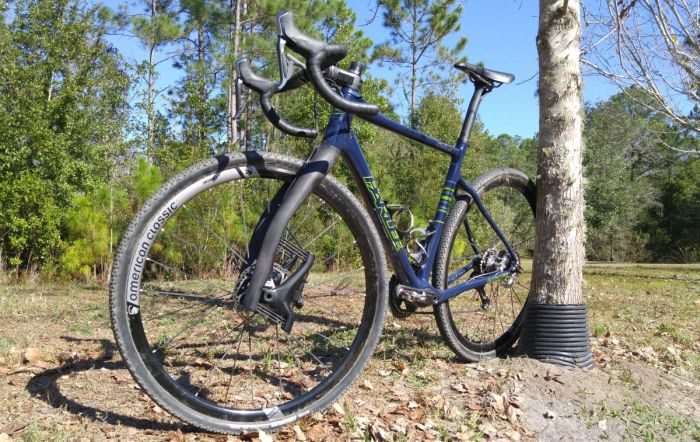
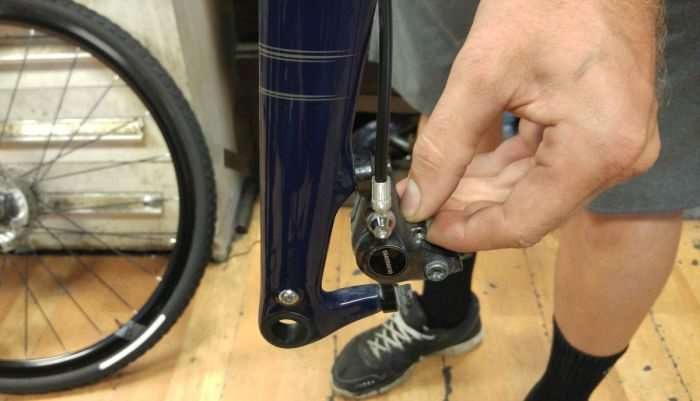

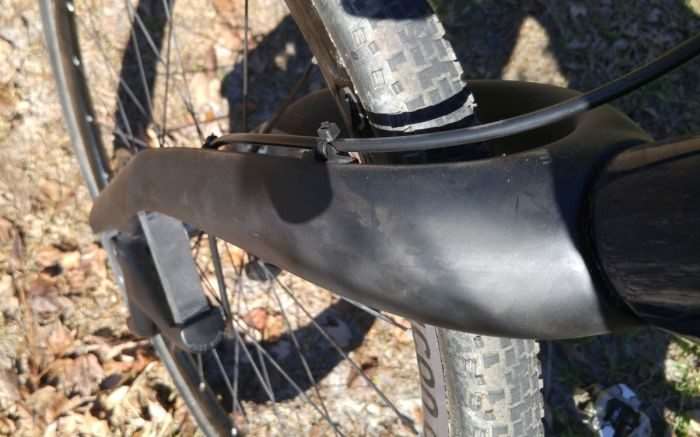


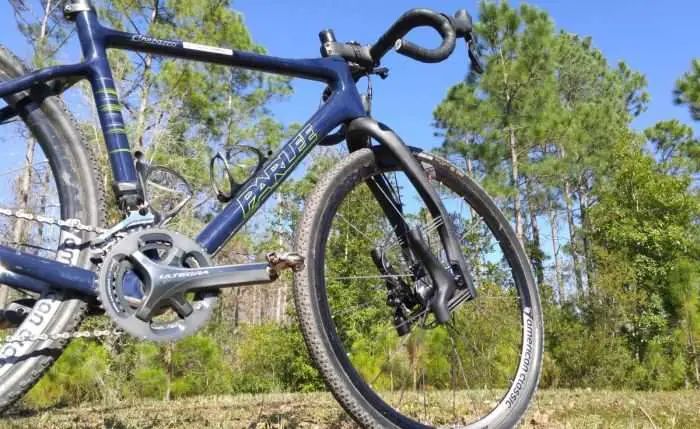
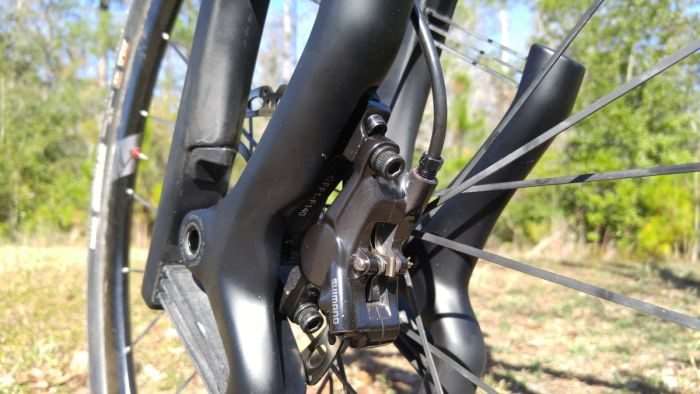


Thanks for this review (and many others). Although I’m of the roadie school of thought, sounds like this fork is a “solution looking for a problem”. 650B with 2+” tires seems like a much better solution — and aesthetically more pleasing.
Thanks for the review. I like the function and look of this fork quite a bit, but all the same I’m more intrigued with the Redshift Sports Shockstop stem as a lighter and more subtle option.
I checked out that stem on Kickstarter, and my first impression is: anything that rotates your handlebars down and forward like that seems like a baaaaad idea. Good way to do an endo.
Reviews have been extremely positive.
Movement in the stem isn’t a lot – there aren’t issues with brake dive, etc. I have one, but haven’t had time to write a review for it.
It sounds like a winner form the varied reviews thus far. I do wonder if it’s a product stout enough for some serious grinding, or is more of a ‘hybrid bike’ sort of thing.
The fact that it’s only about a pound heavier than a rigid carbon fork is impressive. Most MTB forks are 2-3lbs heavier than a rigid MTB fork.
That said, regardless of how well it works, it’s just too ugly for me to ever put one on one of my own bikes! But I’m also in the camp that if you need more suspension than your 40mm tubeless tires provide, you should probably just ride a MTB instead.
Different stokes for different folks and all that though.
I’m currently riding 27.5 x 2.0 tires on my gravel bike that’s not a gravel bike but I call it one anyway. That school of thought is definitely relevant for my use after thinking that 40c would be good enough for my weight (spoiler alert: it wasn’t).
Any opinions about the rock shox paragon vs. the lauf or the lefty Oliver from the slate? The rock shox is an air suspension in either 50mm or 60mm and is a lot less expensive. I’ve been thinking about it for a while now but not many reviews are out there.
Hi Dave, sorry, absolutely no time on the other suspension systems. Fox also has a fork in the works…
This is an ugly fork, I’m old school when it comes to my bikes. My favorites are steel, with large tires. I’m sure someone with the bucks to spare might find it useful.
If you ride mild gravel and or tarmac you can easily handle fine with a stiff fork.
If you’d like to go off those paths and ride rougher gravel, trails and even mtb tracks, Grit is a great companion. What it does, it helps reducing hand, neck and shoulder fatigue (reduces vibrations). It also offers better traction as the tire is not shattering over rougher terrain.
If you descend and bump into something, you easily can have a hard hit riding a stiff fork, this drastically lowered using Grit. It’s well worth having the fork as it increases the ease for us to widen the usage of our gravel bikes.
For those thinking a 2.0-2.1 650B tire is the key, well sure, it helps. But it’s still not near what the grit does.
So pending on your choice of terrain and/ or the possibilty to take your graveling to a rougher level, it’s really a great fork.
I swap between Lauf Grit and 3T Luteus II on both 700C (38-40mm tires) and 650B wheels (48-52mm tires).
Are you an employee or dealer for Lauf forks? Your comments certainly sound like you’re an insider marketing person.
Perhaps you could tell us more about the rides and races you’ve done that have you reaching this conclusion – that the Lauf Fork is better than bigger tires?
In my opinion, the Lauf fork is a product begging for a solution. It adds unnecessary weight, has zero rebound control, and as the video posted by the gravel cyclist guys shows, it is useless on rutted or washboard roads. Not the lame “washboard” video posted by Lauf people, but the real stuff. No suspension can tame that.
Bigger tires and lower pressure work far better than the Lauf Fork. I will give kudos though. Lauf has somehow convinced all of these people riding on gravel roads they need suspension. Really, you do not.
I don’t work, sell or have anything to do with Lauf.
Neither do i say it’s better than larger tires.
I merely tried to say, it’s not doing what a larger tire does.
Personally i dislike under inflated tires because they makes it more sluggish and it also decrease speed.
Yes, Grit can also do that. I agree totally. It also, as you state, is heavy even if Lauf says it’s the lightest suspension fork to date.
True also, the bike is more nimble with a stiff fork.
I don’t ride Grit 100%, neither did try to imply i did.
What i tried to say is that if you would like to ride harsher routes, Grit is helping.
As the fork is 100% active it’s both it’s bonus and it’s downside.
For terrain where it’s not needed it’s faster with a stiff fork.
But at the same time, at paths/ roads, trails where even a wider tire is adding comfort, the Grit fork will make traction more seamless and it will absolutely save your hands, neck and shoulders. I ride both my forks and Grit helps keeping you less fatigued.
It is a good idea if you ride it, or use it where it is rougher.
Some ride gravel crossing into mtb territories. For these conditions Grit do help.
But i surely agree, a lighter fork had been welcome.
I wouldn’t mind testing a stiffer version aswell as 600-700 gram version either.
Anyway, no matter how you put it, it prevents a huge degree of vibration and energy transferred through the fork. It will give you a plusher ride and it will help your front tire traction.
It’s not as nimble as a stiff fork. But if you do ride down a descent or into a root and your bike hit that full on, you will surely run a larger chance saving the day using a Grit.
It’s a compliment to your bike, you need not use it 100%.
But for those times you are really into a more severe terrain, Grit surely has it’s place.
Hey, Lauf specs the max 650b tire size as 27.5×2.1; but, by any chance do you think one might be able to cram something of the 2.25″ persuasion into this fork? I ask because I was pondering the merit of running a reverse wheel mullet (650b party in the front, 700c business in the back) with my Renegade using the new Grit that I ordered for it, but 27.5×2.25 is closer in outer diameter to the 700×38-42 size tire that I want to run in the back.
That being said, 2.1 wouldn’t kill me, I suppose, considering that the Grit is longer, axle-crown, than my stock fork, even with sag taken into account.
-Ed
I think you can get away with a 2.25 tire. I tried with Schwalbes studded. The issue i had with my bike, was the chainstay clearance. Not with the fork.
I find it funny how many people state that just running 650b with 2.X” wide tires would be enough instead of running this fork…
1) How many drop bar geometry frames/stock forks can even fit 650×2.X?
2) A rigid fork with 650×2.X tires will still not come close to running this fork WITH a 650×2.X tire.
-Ed
Ed,
Many people claim to know when for real, they assume.
It’s a difference even though some don’t like to face that
Currently using a Salsa Warbird carbon 2016
Only issue is tyre size
I am using Specialized Renegade 1.8 which is relatively high and opens to 45mm
Acoording to the review should be ok
Question if will be enough for both tyre and 30mm movment of the fork
What do you mean, if you can use a 45mm tire and still have 30mm suspension?
If so, yes ofcourse.